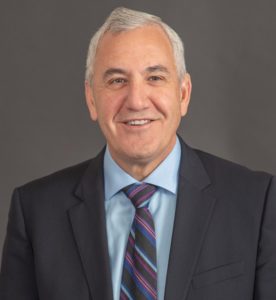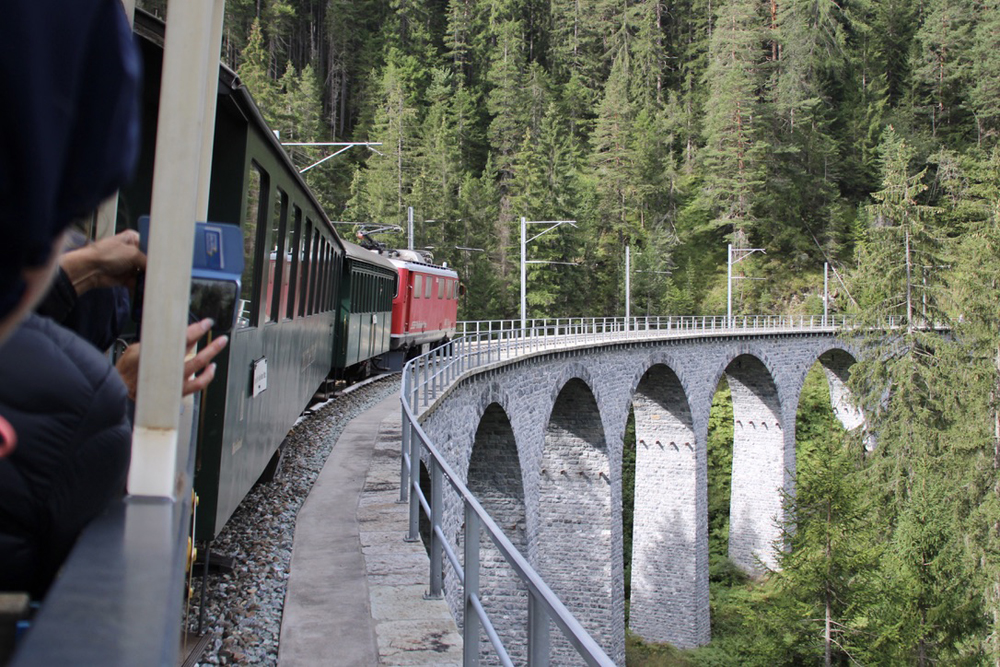
For clues about where incoming CEO Jim Vena may take Union Pacific, look at where he wanted to take Canadian National.
You may recall that in late 2021 activist investor TCI Fund Management touted Vena as a replacement for CN CEO JJ Ruest. Vena, who rose through the ranks to become chief operating officer during his 40-year career at CN, ultimately backed out during the interview process in Montreal. But TCI’s presentation to the CN board left a trail of breadcrumbs we can follow to see what Vena’s strategy might be when he returns to the Union Pacific Center at 1400 Douglas St. in Omaha on Monday.

TCI’s No. 1 goal was for CN to provide efficient, low cost, safe, and reliable service. That, in turn, would lead to volume growth from existing customers and open up new markets, which would produce additional growth.
Vena outlined this strategy himself during UP’s 2019 third quarter earnings call, when he was the railroad’s chief operating officer. “We want to be where we have a very efficient railroad, we are able to open up new markets, we’re able to beat the competition — which is other railroads and truck — and bring more product in without dropping our price,” Vena said.
People close to Vena say he believes the operating ratio should be an outcome, not a goal. This is a big deal. UP is out of step as the last railroad with an operating-ratio target. Perhaps Vena will bury UP’s 55% O.R. goal once and for all.
Back in 2019 UP hired Vena to accelerate its transition to a Precision Scheduled Railroading operating model. During his two-year tenure as chief operating officer, Vena gained a reputation as a master cost-cutter. Many at UP believe he went too far, too fast.
This much is clear: By the time Vena left UP at the end of December 2020, the number of people on the payroll had declined 21%, the company enjoyed $1.4 billion in efficiency gains, and the railroad’s service had improved to an all-time best based on its trip-plan compliance figures.
But UP, like the other big three U.S. railroads, was running too lean and quickly found itself short of crews in 2021. Service suffered, shippers were up in arms, and regulators scrutinized UP’s performance and its skyrocketing use of embargoes. The railroad has finally dug itself out of that hole and service has largely returned to pre-pandemic levels.
Naturally, UP’s labor unions view Vena’s selection as CEO as a giant step backwards. And inside UP’s headquarters, some fear a return to what they view as a slash-and-burn mentality. Vena will have to reach out to labor and win over the skeptics.
But resetting UP’s operations and cutting costs were precisely what Vena was brought in to do in 2019. You can bet that Vena the CEO will be different than Vena the COO.
For one thing, there’s not much left to cut, which means that UP needs to bring on more volume in order to propel earnings growth. UP has already started down the growth path: Its traffic was up 2% last year while rival BNSF Railway’s volume declined 5.6%. UP’s running well ahead of BNSF this year, too.
For another, consider the case of Keith Creel, the last chief operating officer who was promoted to CEO. When Creel took the reins at Canadian Pacific in 2017, many in the industry thought he would be Hunter Harrison 2.0.
Creel defied expectations by making CP the most entrepreneurial and fastest-growing Class I railroad. CP opened new transload centers and auto ramps, forged tighter partnerships with its short line connections, won international intermodal business from CN, and grew its domestic intermodal business, too. CP also bought back part of its historic shortcut to Atlantic Canada with the Central Maine & Quebec acquisition, which has brought huge growth to the port of Saint John, New Brunswick. And of course Creel’s CP won the battle for Kansas City Southern.
The result? Since 2017 CP’s volume is up 6%, revenue by 36%, and operating income 32%. People close to Vena expect him to deliver similar results at UP.
Over the same 2017-2022 period, UP’s volume declined 5%, revenue was up 17%, and operating income grew 24%. Imagine how much better UP’s results would have been had volume been in positive territory.

UP is an enigma. For years its executives have touted the fact that UP has the best network in North America. Yet for most of the past decade-plus UP has lost share to BNSF and has been in the volume basement as the slowest-growing Class I railroad. In fact, UP’s volume was essentially flat from 2013 to 2022.
There are two interrelated reasons for this. First, that O.R. target has been part of UP’s focus on profit margins rather than handling more freight. Second, due to bouts with crew and/or locomotive shortages, UP could never maintain consistent service levels during Lance Fritz’s 8½ years at the helm, even as it made volume growth a goal over the past two years.
Meanwhile, UP’s board was asleep at the switch. Only upon Vena’s appointment as CEO last month did it create a new committee to monitor safety and service. Wasn’t that part of the board’s oversight job all along?
Some at UP headquarters welcome Vena’s return and believe that he can provide the leadership and discipline necessary to fully unleash UP’s potential. Let’s hope so. It would be a win not only for Omaha but for the entire industry given the amount of traffic that UP originates and interchanges with the other systems. Says one person close to Vena: “Jim is not a cost-cutter. He is a cost and asset manager, who takes the view that service, safety, and employee engagement are all foundational to growth – and only the growing will thrive.”
You can reach Bill Stephens at bybillstephens@gmail.com and follow him on LinkedIn and Twitter @bybillstephens














Bill Stephens, your constant picking at Uncle Pete leads me to believe you don’t like them very much…. Sort of like Avis always nipping at Hertz’s heels…
Sometimes is it hell to be the biggest. But then again, hiring a marketing guy to run a railroad was not the smartest decision… Sort of like hiring an airline or bus exec to run Amtrak…. oh, that did happen, my bad. lol
I asked a engineer if he runs “track speed”. His answer was mostly “no”. Any engine that fails to run as it is supposed to will prevent running track speed. And, the QUALITY of the engines on a train has dropped in the last few years. Add that to throttle/speed limits due to the class of the train and a misbehaving locomotive is a problem. Reduction of engine repair facilities (remember closing of Denver Diesel?) means less good engines. And in spite of that many locomotives remain in storage.
And trouble spots remain. For example westbound trains have a high stalling history in Bisbee, Az. Many very slowly finally make it up the hill.
So, if Mr Vena is to be UP’s answer on service will he do something on locomotives? We should know by the Christmas rush. Tinkle, tinkle.
I have low confidence this guy knows how to run a business. He can keep one segment of stakeholders happy and make personal income, but I see no evidence he understands The Goal. Just like most of today’s airline executives. Just enough skill to make profits when times are booming, but the slightest blip and they’re whining and making excuses and looking for handouts and concessions.
Let’s wait and watch the new developments in the UP top management.
Dr. Güntürk Üstün
I hope Vena keeps the steam program going. That is a big PR asset for UP. CN had a steam program years ago and threw in the towel. They are now sort of anti-steam. The new CPKC under Keith Creel is bringing back the Empress 2816 and will run it to Mexico City next April with public stops along the way to celebrate the merger. No public excursions though during that tour.
Meanwhile, back to reality:
https://www.trainorders.com/discussion/read.php?1,5721625
“[…] they are implementing the 2-person local crews eliminating the brakeman position. Everything has been thrown into chaos here in the PNW. UP seemingly has thrown caution to the wind and just going to let the chips land where they may. Several jobs just run till they run out of time and start there the next day. There is no semblance of a schedule for customers any more. Many customers will be lucky if they get switched more than once or twice a week. ”
Railroading has no future with these guys in charge.